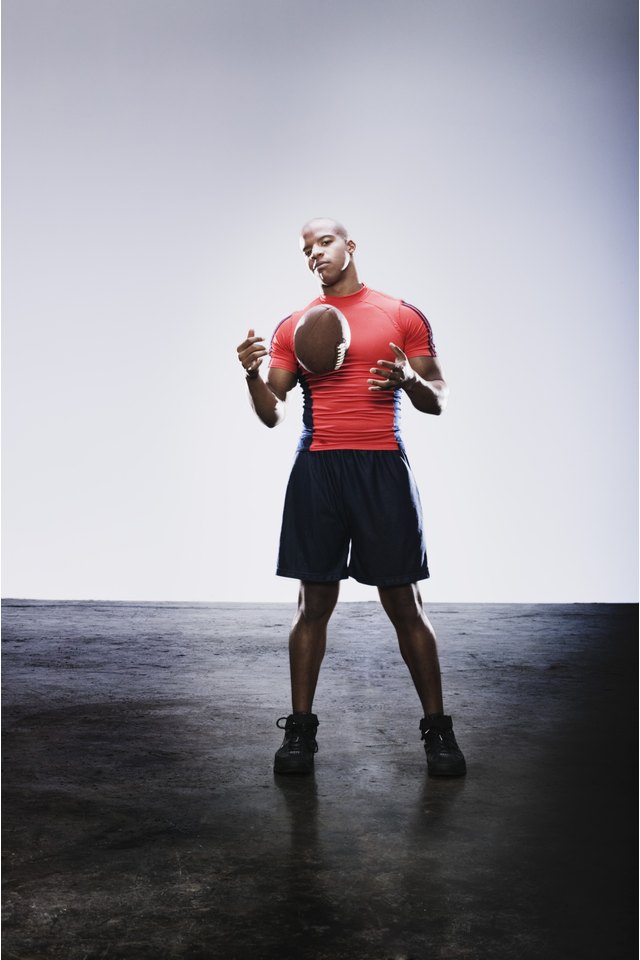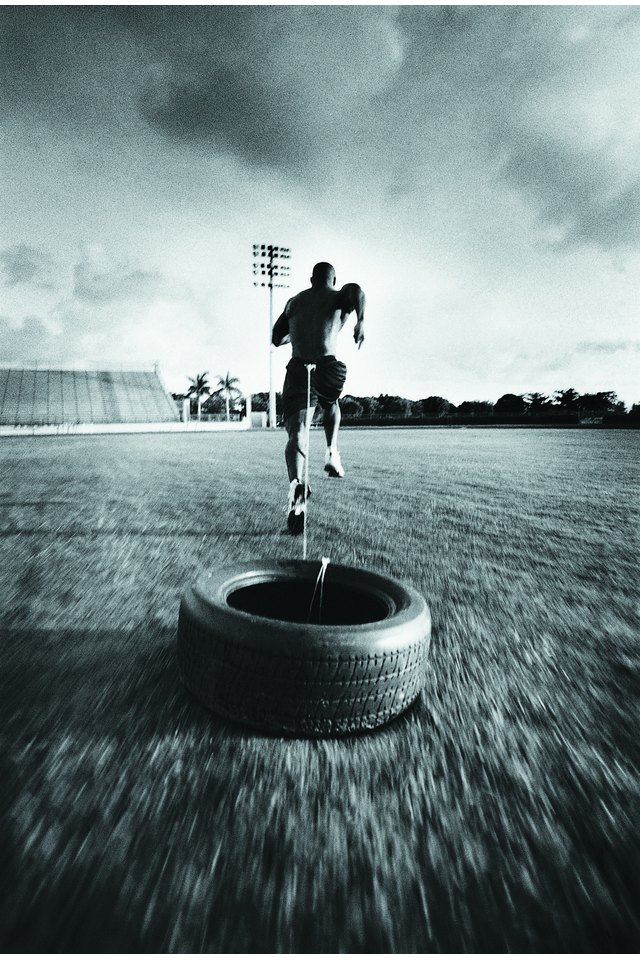Top Conditioning Exercises for Wide Receivers

A wide receiver must possess speed, balance, agility and hand-eye coordination. He also must be in top condition because the demands placed on him are great. No other player on the field runs as much as a wide receiver, as he might be asked to run 20 yards or more downfield on every play with just a few seconds rest. If he isn’t in good shape, his ability to make plays could be limited.
The right type of running

BananaStock/BananaStock/Getty Images
A training regimen that relies solely on jogging or long-distance running isn't effective for a wide receiver. With teams running as many as 70 offensive plays or more during a game, wide receivers need short bursts of energy. Gassers, which are a type of sprint, provide the conditioning needed.
Begin the drill on one sideline of a football field and sprint to the opposite sideline, turn and sprint back. One gasser is considered four trips sideline to sideline. Warm up for five minutes, using a combination of high-stepping movements and striding.
Training Cones

BananaStock/BananaStock/Getty Images
Training might become boring if an athlete utilizes only gassers. A wide receiver can add variety by incorporating pyramid drills into his routine. These drills improve an athlete's balance and agility.
Starting from the goal line on a football field, the wide receiver should set up cones at 20-, 40-, 80- and 100-yard intervals. The drill includes: 10 100s, eight 80s, six 40s and four 20s. Start with the 100-yard sprints -- back and forth five times -- then take a two-minute break. Follow that with eight 80-yard sprints, then take a two-minute break and so on.
Resistance Training

BananaStock/BananaStock/Getty Images
Drills that simulate game action are beneficial because wide receivers rarely run pass routes unabated. Tire drills are effective because they are a type of resistance training. Aim for sets of three to five flips.
To start, get a tire you know that you can move and stand facing one side. Crouch with your feet shoulder-width apart, place your hands just outside your feet and grip the underside of the tire. Move your feet back until you feel your weight shift to the balls of your feet. Don't try to lift a tire with your arms. Once you get the tire to your waist, you’ll have to quickly switch hand position to the top of the tire pushing outward until it turns over and flips.
Beat the Clock
Depending on an athlete's age and stature, 50-yard accelerations might be a better alternative than 100-yard sprints. The set-up is the same: place a training cone at the 50-yard line and start from the goal line. Sprint to the cone and back to the goal line. Beginners should aim for a time of 18 seconds while others should shoot for 16 seconds or less. Besides the conditioning aspect, this drill works on balance and agility.
References
Resources
Writer Bio
George Hammond is a journalist with more than 30 years of experience. For more than 18 years, he served as a member of the copy desk at "The Patriot-News" in central Pennsylvania. He also has written for "Referee" magazine and various online publications. Hammond is a graduate of the University of Delaware.
